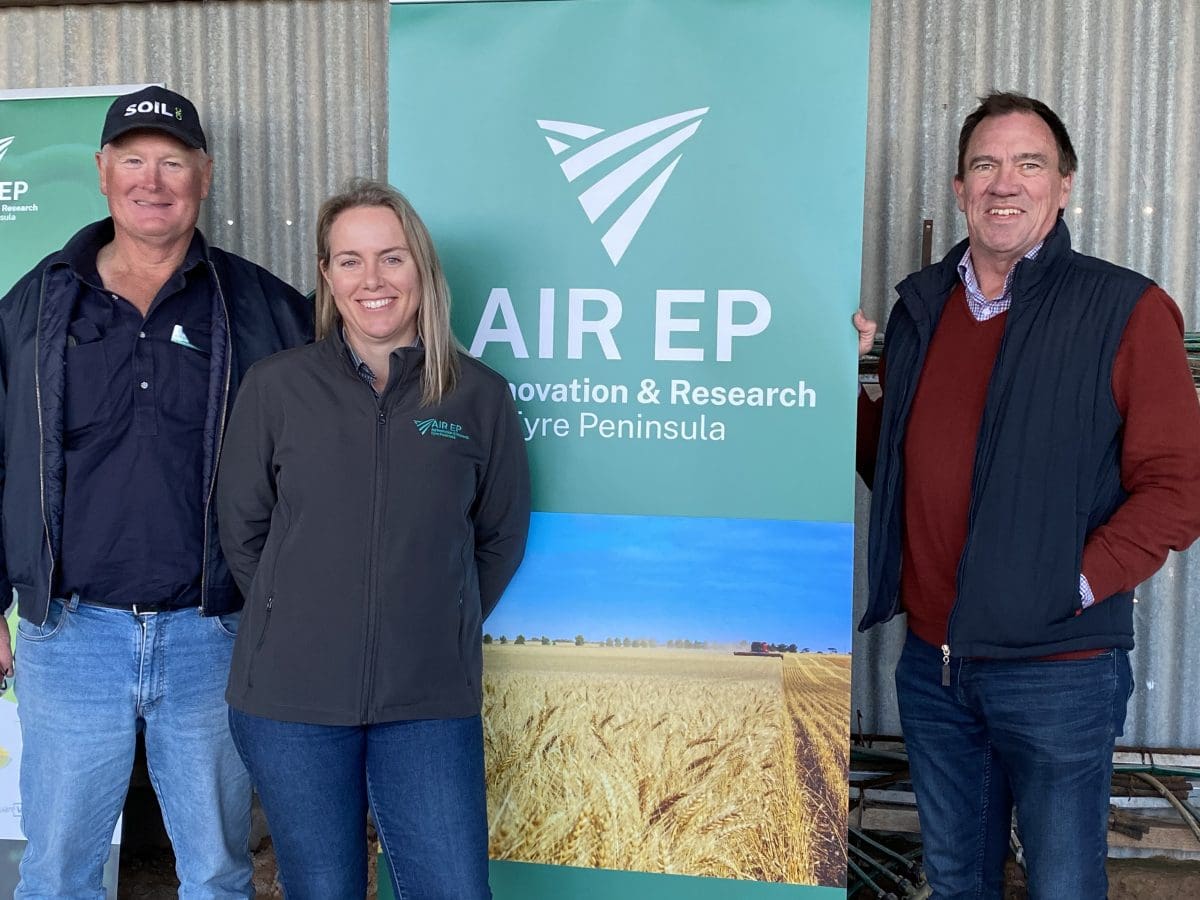
AIR EP chairman Bryan Smith and executive officer Naomi Scholz with local member Peter Treloar. Photo: Member for Flinders Office
A NEW grower-based research, development & extension (RD&E) organisation has formed in South Australia with Agricultural Innovation and Research Eyre Peninsula, or AIR EP.
Launched this week, it has amalgamated the Lower Eyre Agricultural Development Association (LEADA) and the EP Agricultural Research Foundation (EPARF).
Under executive officer Naomi Scholz and chair Bryan Smith, it represents about 370 growers farming in an area roughly the size of Tasmania.
Ms Scholz was appointed in May, and the AIR EP board this week held its second meeting.
“We found LEADA and EPARF were doubling up when it came to governance and project management, and it’s more efficient for us to have one organisation with a bigger membership base that covers probably 50 per cent of EP growers,” Ms Scholz said.
Its board appoints sub-committees to focus on RD&E opportunities for the low-rainfall zone covering the Upper EP, where most farms get less than 325 millimetres of annual average rainfall, and medium-rainfall zones on the Lower EP, where more than 400mm can be expected annually.
“We have over $5 million worth of projects on the books for next three years, and we use private and government contractors to conduct that research.”
Organisations including the Australian Government’s National Landcare Program (NLP), the Grains Research and Development Corporation and the South Australian Grains Industry Trust are among the major funders of AIR EP’s projects.
AIR EP is self-funded through membership fees, corporate sponsorship, and RD&E investment programs, with the largest being the NLP-funded Resilient EP project.
Resilient EP aims to make sense of the large quantities of soil moisture-probe data being generated on the range of soil types across the region at different times in the cropping and fallow periods.
“Combining this data with climate information will help growers make better management decisions.”
“It will increase grower’s confidence when deciding when and what to grow, fertiliser decision-making, timing of grazing and trying innovative practices that will improve their resilience as the impacts of climate variability become more severe.”
AIR EP’s membership base spreads from Whyalla in the east to Coorabie in the west and Port Lincoln in the south.
Farms in the Upper EP mostly grow cereals and run sheep in a mixed-farming system, while on the Lower EP, continuous cropping with canola, faba beans and lentils as well as cereals is more common.
Through its involvement with the Soil Cooperative Research Centre, AIR EP is hoping to help growers find ways to more effectively farm in problem soils which impact large areas of the EP.
These soils can be water repellent, subject to wind and water erosion, low in fertility, high in acid, alkalinity or calcium carbonate, and affected by subsoil constraints, all factors which can inhibit productivity.

HAVE YOUR SAY